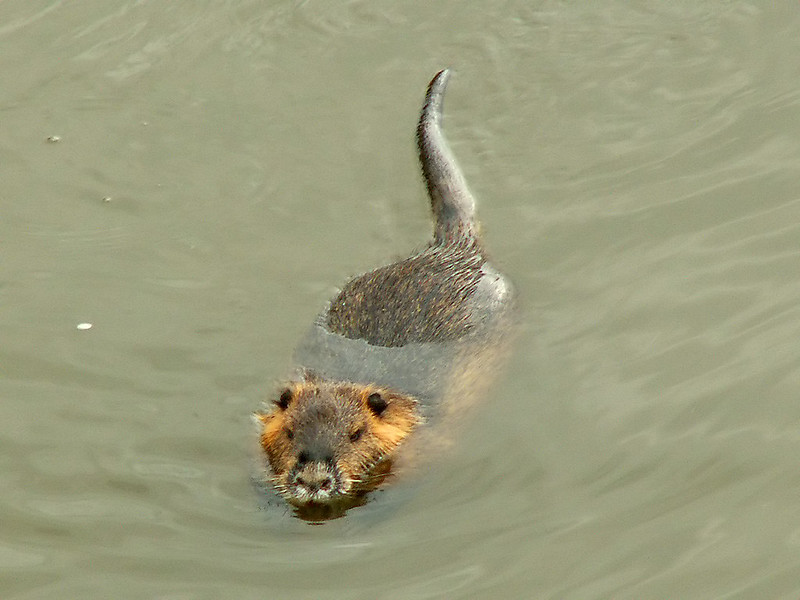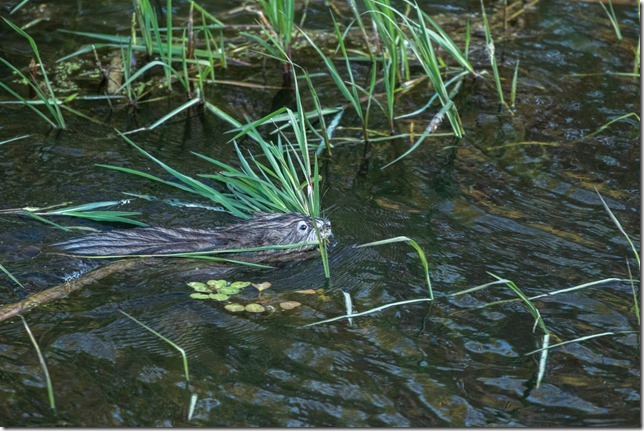Nutria


Nutria (Myocastor coypus) and beaver (Castor canadensis) are both semi-aquatic rodents that inhabit wetland environments, but there are several key differences between these two species:
- Appearance: Nutria are generally smaller than beaver. They have a round body with short legs and a long, rat-like tail. They also often have long white whiskers.
- Habitat: They are found primarily in freshwater and brackish wetlands, while beaver inhabit a wider range of aquatic habitats, including rivers, streams, ponds, and lakes.
- Diet: Both beaver and nutria feed on various aquatic plants and grasses, but only beaver fall trees and eat the twigs and bark.
- Behavior: Nutria are generally more solitary than beaver, which live in family groups consisting of a breeding pair and their offspring. Beaver are also known for their ability to build dams and lodges, while nutria do not exhibit this behavior.
- Ecological impact: Both nutria and beaver can have significant environmental effects on their habitats but in different ways. Nutria are native to subtropical and temperate South America. In the United States, they’re considered invasive in many areas and can damage wetland ecosystems by overgrazing vegetation and digging into the soil, leading to erosion.
Muskrat


Muskrat (Ondatra zibethicus) are another semi-aquatic rodent commonly found in North American wetlands, but they exhibit distinct differences from beaver:
- Appearance: Beaver are significantly larger than muskrats. Muskrat, weighing about 1.5 to 4 pounds, have a narrower, vertically flattened tail covered with scales and sparse hair, which aids swimming.
- Habitat: Muskrat do not build dams and are more adaptable than beaver. They live in a broader range of water bodies, including marshes, ponds, and rivers. They build burrows and lodges made primarily of vegetation.
- Diet: Their diet is more varied, including cattails, water lilies, and other aquatic vegetation. They occasionally eat small aquatic animals.
- Behavior: Muskrat are less social; while they may live in loose colonies, their social interactions are generally limited compared to beaver.
- Ecological Impact: While less transformative, muskat contribute to the ecology by helping control aquatic vegetation and affecting sedimentation patterns in their habitats.
River otter



River otter (Lontra canadensis) are another semi-aquatic mammal that inhabits wetland environments, but these two species have several key differences.
- Appearance: River otter are sleek and slender with long, streamlined bodies and tails, typically weighing 10-30 pounds. They have webbed feet and a thick, water-repellent fur coat. Their heads are small and rounded with short snouts.
- Habitat: They are found in various aquatic environments, including rivers, lakes, marshes, and coastal areas. They require clean, unpolluted water and prefer abundant vegetation and prey habitats.
- Diet: Unlike herbivorous beaver, river otter are carnivorous and primarily eat fish, but they also consume a variety of other aquatic organisms, including amphibians, crustaceans, and small mammals.
- Behavior: River otter are social animals often seen in larger family groups than beaver. They are known for their playful behavior, such as sliding down muddy or snowy banks and playing in the water.
- Ecological Impact: River otter play a crucial role as top predators in their ecosystems, helping to control fish and invertebrate populations and maintain healthy aquatic environments.
Aplodontia or Mountain Beaver


Aplodontia or sometimes called Mountain beaver (Aplodontia rufa) and North American beaver (Castor canadensis) are unfortunately confused due to the misnomer of their shared common name, but they are significantly different in many regards:
- Appearance: Aplodontia are much smaller than beavers, typically weighing 1-3 pounds, with a stocky body, short limbs, and a very short tail that sometimes isn’t even visible, unlike the large, flat tail of the beaver. They lack the beaver’s distinctive webbed feet, as they are not aquatic.
- Habitat: They are strictly terrestrial and prefer dense, moist forests with abundant undergrowth, primarily located in the Pacific Northwest of the United States. Unlike beavers, they do not modify their environment and are not found in aquatic habitats. They dig extensive burrow systems, which serve as their primary habitat.
- Diet: Aplodontia are herbivorous, feeding on various ferns, leaves, and small plants. Their diet is more restricted and closely tied to their forest undergrowth habitat.
- Behavior: They are solitary creatures, rarely seen because they are primarily nocturnal and spend a lot of time in their burrows.
- Ecological Impact: Aplodontia do not have such a dramatic impact on their ecosystems. However, their burrowing can aid in soil aeration and undergrowth dynamics.





